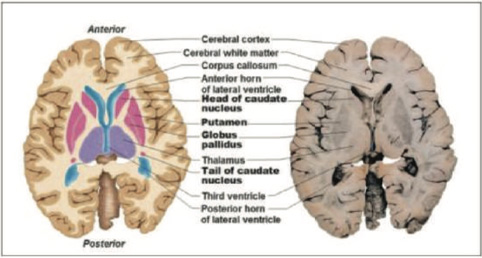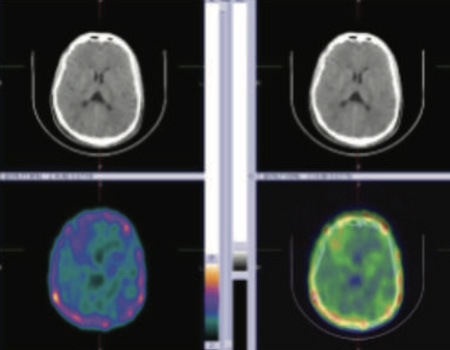Parkinson’s disease (PD), a common neuro-logical disorder, is primarily associated with a progressive degeneration of dopaminergic neurons in the nigrostriatal pathway Accurate diagnosis of Parkinson’s disease is vital

Problems remain in the accurate diagnosis of Parkinson's disease (The diagnosis of movement disorders including Parkinson's disease (PD), parkinsonian syndromes (PS) and essential tremor (ET), shares the same symptoms resulting in a difficulty of certain diagnosis through clinical assessment. The difficulty with diagnosis of early PD has been highlighted in several recent clinical trials studies have suggested relatively high clinical diagnostic error rates for PD and essential tremor.
One of the most important dopaminergic binding sites is the dopamine transporter (DAT), which is in the presynaptic membrane on the terminal of the dopaminergic projection and it’s responsible for the re-uptake of dopamine. DAT is a marker of dopamine terminal innervation. Thus, DAT imaging may provide a measure of dopamine terminal innervation of the striatum.
Technetium-99m labeled tropane derivative, 99mTc-TRODAT, which binds to the dopamine transporter, could be used to image the dopaminergic system. It is reported that there is a close relationship between DAT concentrations and striatal dopamine levels. 99mTc-TRODAT SPECT could provide an ideal tool for evaluation of PD and help to differentiate PD from ET and other PS cases.
71 years old gentleman with history of tremors since last couple of months.
Ref for 99mTc-TRODAT SCAN (DAT SCAN) to exclude the Parkinsonism

Figure 1 & 2: 99mTc-TRODAT SPECT CT fused images
Trodat Images shows normal tracer uptake pattern in caudate and putamen suggesting normal Dopamine Transporter System.
31 years old gentleman with history of bradykinesia, generalized rigidity and tremors since last four to five years and is on tablet Sinemet, legaflexa, amental.
Ref for DAT SCAN (Trodat) for the confirmation of Parkinson’s disease and assessment of the extent of the severity of the disease.
99mTc-TRODAT SCAN (Dopamine Transporter Imaging) October 2017
Left side–There is minimal to mild tracer uptakes in lower portion of the putamen. Right side--There is minimal to mild tracer uptakes in caudate lobe and no appreciable tracer uptakes in putamen (figure 1)

Figure 1: October 2017

Figure 2: September 2019
ABNORMAL DAT SCAN confirms the Parkinson’s disease and severity of the disease process (minimal to mild functional dopamine transporter system in right caudate lobe and lower portion of putamen on left side, favours severe deficit in dopamine transporter system on oct 2017 DAT SCAN images and progression of the disease process on Sept 2019 DAT SCAN (No appreciated TRODAT tracer uptakes on either side)
Functional Imaging of the Dopamine Transporter (DAT) defines integrity of the Dopaminergic System and has its main clinical application in patients with mild, incomplete, or uncertain Parkinsonism (DAT is used to detect the presence of Dopamine Transporters (DAT) in the brain.
a) Detection of loss of Functional Dopaminergic Neuron Terminals in the striatum of patients with clinically Uncertain Parkinsonism.
b) Differentiation of Essential Tremors, Psychogenic Parkinsonism or Neuroleptic induced Parkinsonism from Presynaptic Parkinsonism Syndromes (Parkinsonism Disease, Multiple System Atrophy, Cortical basal Degeneration, and Progressive Supranuclear Palsy).
c) Early detection of Parkinsonism Disease.
d) Assessment of the disease severity and progression.
e) Differentiation of Dementia with Lewy bodies from other Dementias.

Dopamine Transporter Imaging with 99mTc-TRODAT is a simple technique that can sensitively detect or rule out degeneration of presynaptic striatal dopaminergic nerve cells. It can differentiate Presynaptic Parkinsonian Syndromes (PD, MSA, PSP) from Essential Tremors, Drug-Induced Parkinsonism and Psychogenic Parkinsonism.